Antares undergoes periodic collapses and rebuilds where all its gates disappear. There have been many before the panhuman ages, the starfaring K’Kwii and the remnant Askar warriors both being survivors of once-great civilisations from previous ages. The Antares as we know it is currently in its 7th Age – there have been six collapses whilst panhumanity has been connected.
Some of these previous ages have been relatively peaceful and prosperous, whilst others have been stricken with continual war between factions and empires. In the coming months, I’ll expand on some of the history of one of the most worrying and fractious times in Antares history: the Warring Ages, the 5th Age of PanHumanity on Antares.
Note: Antarean dates are given in the format <age>A<common_year>, where <age> is 1A, 2A, 3A, and so on up to 7A for the Seventh Age, and the <common_year> is the generally agreed, standard Old Earth year after the Age was established. This is often from where gates first began to reopen, but could be from the emergence onto Antares of an influential system, such as Isor in the 7th Age. The collapses are in the same format but with ‘AC’, such as ‘5AC10’.
The diagram below shows a rough progress of humanity and panhumanity throughout the collapses of Antares.
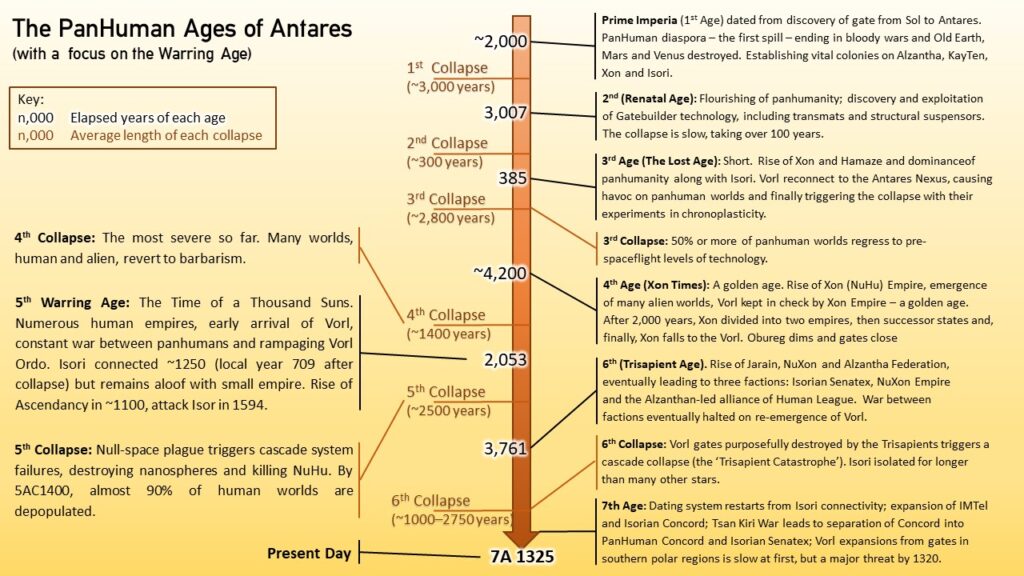
The Fourth Collapse
The glory that was the Xon Empire collapses at the end of the Fourth Age and, once more, the worlds of Antares are isolated from each other. Settled worlds, whether human or alien, regress to a state of barbarism, most likely due to the loss of the frequent inter-system traffic that was a feature of the Xon Empire. Without the trade in advanced technology, knowledge and off-world resources, many previously hale planetary civilisations succumb to natural disasters, disease or war and nothing but ruin remains.
The Fourth Collapse becomes the most devastating of all the collapses so far.
Despite the widespread disruption, the more advanced system try to eke out what resources they have, hoping for a quick reconnection. Ultimately, many are disappointed: the local time to the gates regeneration is especially uncertain and the variance between each system particularly high. What records survive suggest that the elapsed time for a gate reconnection is about fourteen hundred local years, a period often referred to by many as ‘The Long Centuries’.
Isori, one of the few worlds to maintain a high degree of technical capability throughout this time, was not reconnected until local year 709 after disconnection – but around 1250 years into the Fifth Age.
The Fifth Age
The Fifth Age proved to be an era of unremitting warfare that the worlds of the dominant federation – the Ascendency – refer to as ‘The Time of a Thousand Suns’. The name refers to the numerous empires that rose and fell during a period on unrelenting warfare and political instability. The Fifth Age is unique in so far as it is the only age during which the technological culture of Antarean space made no real progress and in many cases even declined.
Given this fractured and tumultuous history, the timeline has had to be amalgamated from different sources, though the Isorian records dominate much of the later surviving records. It appears, however, that the Fifth Age lasted just over 2000 years before Antares collapsed once more.
For a Seventh Age student’s perspective, key to an understanding of the Fifth Age is the time for inter-system travel. For a G2 star system, trading ships might take 9 days to travel from the gate horizon to habitable planets and even combat ships would take half that time as opposed to the two days a Seventh Age ship would take. In contrast, Antares surface travel is not as badly affected due to the limitations of Antares and Obureg, with inter-gate travel time on Antares surface only increasing by around 50%, depending on whether the ship was military or a bulk trader.
| For those looking at using the mapping system to create their own, 5th Age Antarean maps and campaigns, travel between subhexes would alter. A Concord cruise liner, for example, takes 6 hours subjective time, around 1.4 days real time, whilst a 5th Age cruise liner (not that there were many!) would take around 10 hours subjective, and 2.3 days elapsed. A Concord military vessel takes around 5 hours per subhex (1.1 days elapsed) whilst the average, high-end 5th Age equivalent would take 7.5 hours subjective (1.8 elapsed). Transit time, of course, remains the same as in the 7th Age: Antares itself does not change! |
| 5th Age Date | Event |
| 5A1-100 | Gates begin to open once more. At first, gate recreation is slower than normal and those gates which are opened are widely scattered across the Antarean surface. |
| 5-150 | Worlds that have retained spaceflight capability begin to explore. Many human worlds are now uninhabited populated by savages or even heavily mutated populations. Exploitation and subjugation of backward worlds is rife, the explorers often as desperate for resources as those they conquer. |
| 150-750 | The Nexus is populated by numerous human federations and small empires. Fierce rivalry between them results in widespread conflict over almost 600 years. |
| 750 | Disparate Vorl ordo attack and destroy many newly emerged human worlds. This forces the smaller empires to co-operate for defensive purposes, at least. Over the next 1,000 years, Vorl forces continue to attack human, alien and even other Vorl worlds, completely wiping out the civilisation and population on many worlds. |
| ~800 | Warfare across the Nexus intensifies, resulting in mass migration from planets rendered uninhabitable or vulnerable to attack. |
| 950 | The Third Claws Ordo rise to dominance in the Vorl sphere, providing a singularity of focus the Vorl were lacking. This leads to the ‘Time of Treachery’: previous panhuman alliances are broken and reforged as newly found federations rise and fall. |
| 1100 | Several thousand human worlds unite into a defensive federation called the Ascendency. This expands and contracts for approximately another 600 years before the Vorl are pushed onto the defensive. |
| ~1250 | Isori reconnects to the Nexus. They quickly establish a small alliance with the nearby, advanced systems but remain largely insular in outlook. To the isolationist Isorians this time it is known simply as the Dark Age. |
| 1594 | Isori itself is attacked but its defences make it secure against aggressors whether human or alien. It steps up extensive research into space-time and the Antarean gate technology in order to build radical new defences against the military forces of panhumanity, aliens and Vorl. |
| ~1700 | The Ascendancy political structures become more rigid, focusing entirely around their military needs. Smaller alien and human federations are absorbed or wiped out whilst others retreat into heavily-defended enclaves where any and all off-worlders are seen as a threat. The Vorl predations are halted. |
| ~1800 | The Ascendancy begins a number of major campaigns against the Vorl Extents across a number of fronts. Over the next two centuries, Vorl are pushed back and their consolidated resistance crumbles as individual Ordo fight both the Ascendancy and each other for survival. |
| 2020 | The Ascendancy begins piling political pressure on Isori to join their fight against the Vorl. After the Isorians refuse, the Ascendancy begins to gather military resources around the small Antarean enclave that is the Isorians and their close allies. Isori protests as, over the next thirty years, their allies are conquered and fall to Ascendancy forces until the Ascendancy threatens the Isorian gate. |
| 2049-2053 | Within the space of five years, the Antares Nexus collapses, putting an end to an age of bloodshed, enmity and rivalry, casting worlds once more into isolation. |
The Fifth Collapse
Observers on Isori record a trans-dimensional shadow cast from the Isorian system gate immediately before its collapse. This is identified as a null-space intrusion into primary space-time. Disruption to nano-based technologies produces a cascade of system failures that almost destroys Isori and its heavily-populated space stations around Isor. The most calamitous outcomes was the death of all but a handful of Isorian NuHu – the only survivors were those in orbitals who quarantined themselves early.
The Fifth Collapse was particularly long, around 2500 years, but it is worth recording some of the critical events that were noted during this time.
| Date | Event |
| 5AC1 | NuHu throughout human space are practically wiped out, most likely as a result of null-space intrusion and dissonance within the nanospore environment as recorded on Isori. |
| 5 | Gates collapse simultaneously throughout the Nexus. Nanospore-based technologies are compromised. Worlds are unprepared and thrown into chaos. |
| 10 | The most technically advanced dimensional engineers in human space, the Isorians develop the means to overcome nano-based system failures within their own system and create a more resilient nanospore, one able to adapt to failure and subversion. During the Sixth Collapse, this would lead to the infection or cross-pollination of the Isorian nanosphere with that of the Tsan. |
| 30-50 | Nano-technologies elsewhere on previously connected systems are largely rendered useless due to the cascade system failures associated with the collapse. |
| ~1000 | During the Fifth Collapse, the loss of advanced human and alien civilisations is unprecedented. Many worlds become depopulated or fall to anarchy in a similar pattern seen in the 4th Collapse. |
| ~1400 | Almost ninety per cent of previously inhabited worlds are bereft of population. Many others harbour only savages. Those that survive develop in isolation, developing cultural distinctions that would survive into the Sixth, or Tripsapient Age. |
Next Instalment: Peoples and Civilisation
In our next instalment, we’ll run through some of the more important peoples and civilisations involved in the Warring Ages: there’s more on the Fifth Age to come!
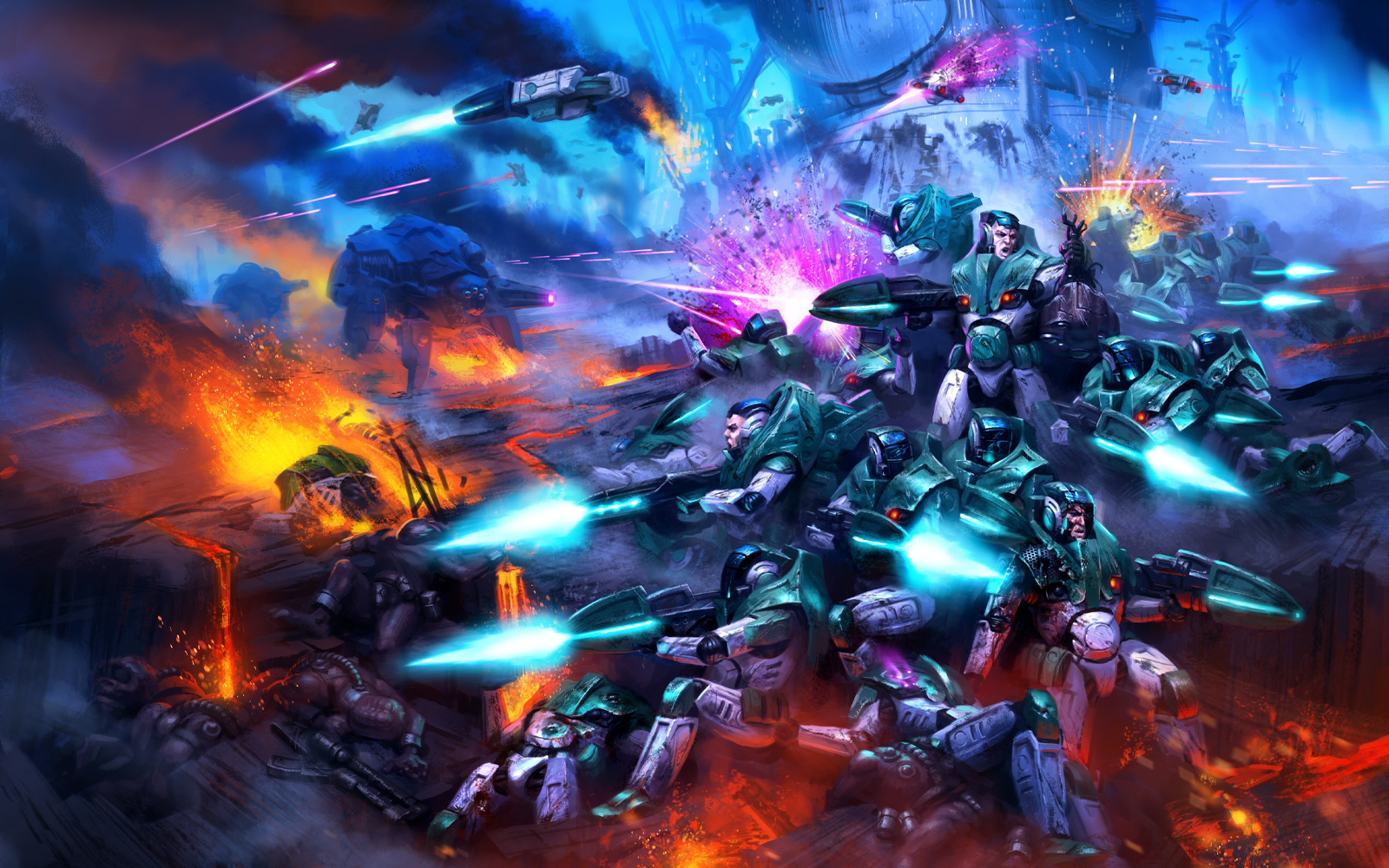
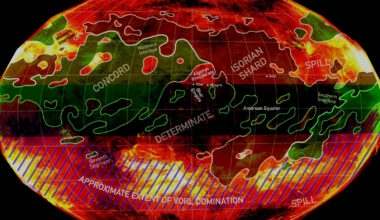
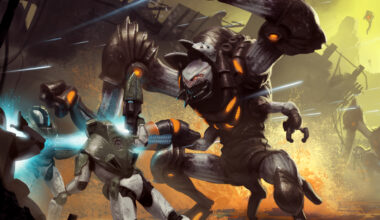

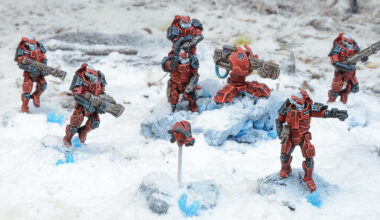

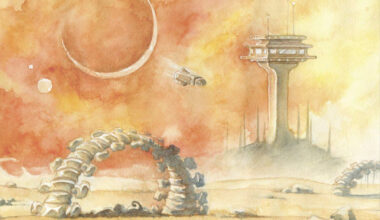
1 comment
I really enjoyed this article! I would like to see more like it.
Comments are closed.